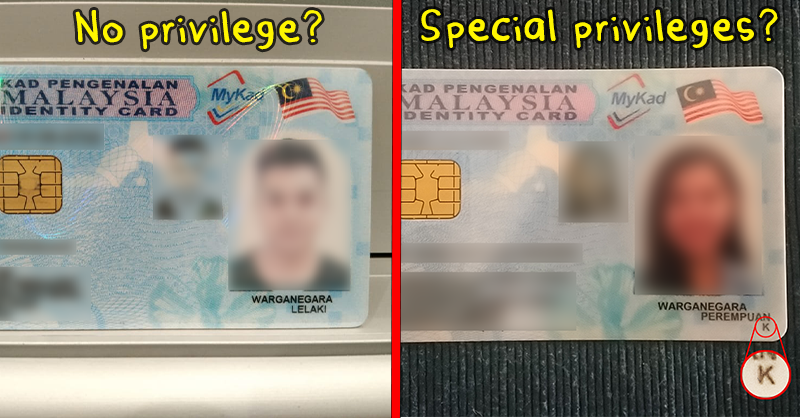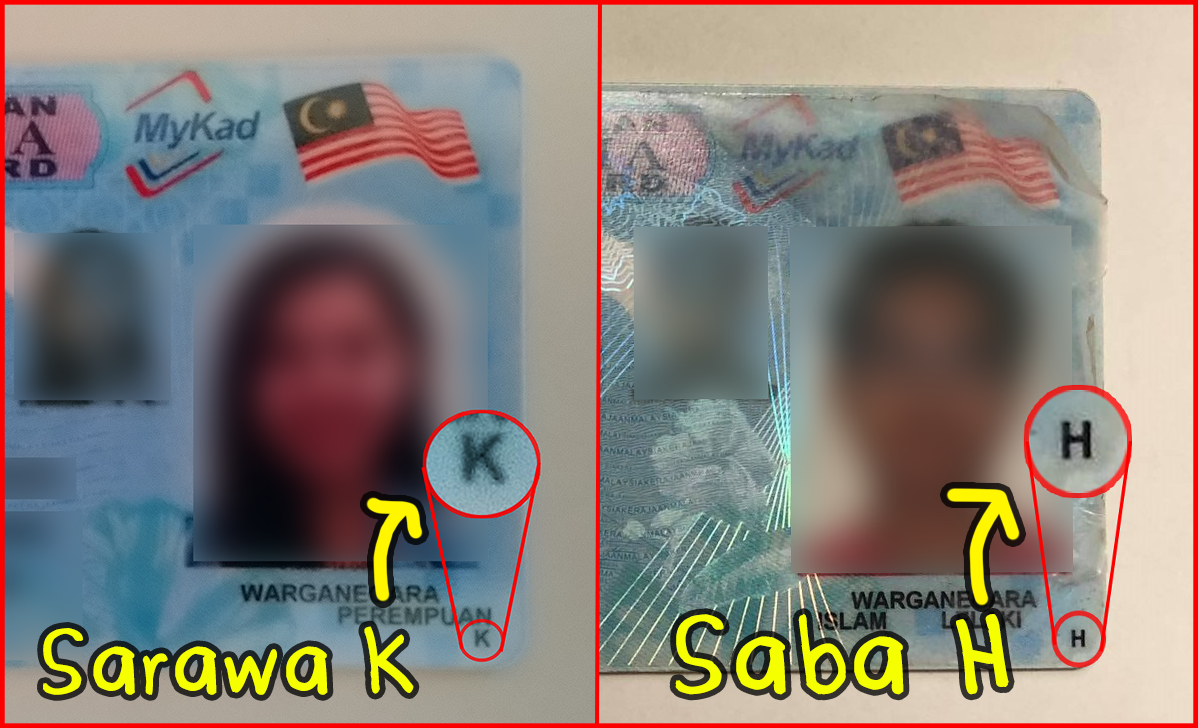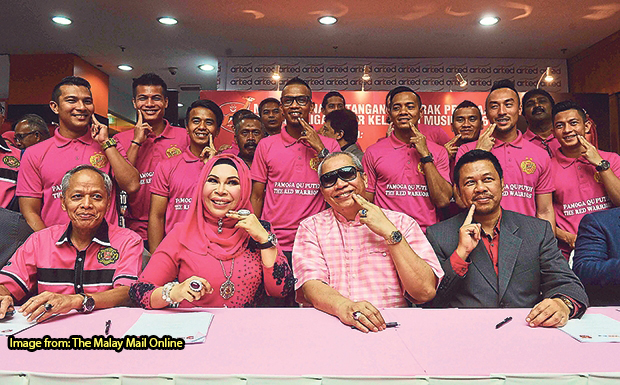Sabahans & Sarawakian IC’s have a feature that gives them… special perks?!

- 1.1KShares
- Facebook890
- Twitter16
- LinkedIn13
- Email22
- WhatsApp135
Whether it’s to register as a visitor or to sign up for an MLM, we use our IC’s almost every day. But did y’all know that they actually have hidden features?
First of all, the last digit of the IC’s are used to denote the gender of a person. Odd numbers represent male, while even numbers are used to indicate female. And while this might be common knowledge to some of you, there’s something that even less people might notice and it’s a little “H” or “K” transcribed at the bottom right of the identification card that kind of looks like this:

Now if you’re from Peninsular Malaysia, you might be wondering what this letter sitting at the bottom of your MYKAD is and why your IC doesn’t have it- but that’s probably because this little feature is only available to those who are from Sabah and Sarawak.
And much like me, a KL-born writer who only found out about the “K” when my mother was applying for it at the JPN, most of us at CILISOS were also not actually aware of this. This then led to the conception of this article, because Semenanjung peeps should know more about Sabah & Sarawak than just their food and their ladies bah.
H is for sabaH, and K is for sarawaK.

As we mentioned earlier, the letters written on the bottom right of the IC would either be a “H” or a “K”, depending on where they’re from. “H” is used for Sabah, while “K” is used for Sarawak, as it’s based on the last letters of Saba(H) and Sarawa(K).
The reason why this ‘H’ and ‘K’ exist is because Sabah and Sarawak have very different laws for their local governance, land, and labour, and they have quite a number of differences from federal law.
So, TL;DR is that if someone has this letter on your IC, it basically means that they‘re legally recognized as a Sabahan/Sarawakian and are bound to their state laws. But of course, this actually applies only when they’re in the state itself.
And because they’re bound to those state laws, they’ll realize that when they’re in their state of origin…
Being a Sabahan/Sarawakian actually gives them special “perks”.

If you’re from West Malaysia and have visited either Sabah or Sarawak, you’ll probably relate when we say that the immigration process makes you feel as if you’re entering a whole other country. Even though it’s technically still a part of Malaysia.
The best part is: I can’t even relate. Because to me, the process is almost instant. There’s no visa interrogation, barely any lines at immigration, and the ‘K’ on my IC made alllll the difference. And that’s not all.
There are certain perks that are given to the people of Sabah and Sarawak, such as being able to stay in Peninsular Malaysia for as long as they like. Meanwhile, the people from Peninsular are only able to stay in Sabah/Sarawak for 90 days, before having to return to immigration to renew their visa.
Not to mention, the biggest perk of all is that we’re able to work in both West Malaysia, Labuan, and our state of origin without any need for authorization from the state government. And this applies to all fields of work! But if you’re from Sabah looking to work in Sarawak, or vice-versa, you’ll still need permission lah.
And chances are if you’re from Peninsular Malaysia and have tried to get a job there, you’ll probably realize how much of a difference this perk makes, especially if…
You can apply for it EVEN if you weren’t born in Sabah or Sarawak!

Okay, okay, okay. We’ll explain.
Technically, if you weren’t born in Sabah or Sarawak, you can still apply for the ‘H’ or ‘K’ on your IC as long as one of your parents was from there. And if that’s the case, there’s a few extra steps that you’ll need to take when applying for this:
- The Sabahan/Sarawakian parent will need to be physically present during the process of getting the ‘H’ or ‘K’ added to the IC.
- The Sabahan/Sarawakian parent will also need to provide their own IC’s and in some cases, their own birth certificates as proof of origin.
- You will also need to have proof of parentage, so definitely bring along your birth certificate as well (if you weren’t going to already)
And speaking from experience, remember to explicitly mention to the JPN staff that you’re looking to add the ‘H’ or ‘K’ to your IC as well, as the process of getting it isn’t necessarily automatic. In fact, we actually had to insist on getting this feature added to my IC when applying it for it. :’D
Oh, and we also found a website that explains this in even more detail, so you can check them out here!
At the end of the day, we’re all still Malaysians… Right?
If you’re from Semenanjung, you’re most probably asking yourself at this point:
“Why do we even need to separate East Malaysia and West Malaysia like this? Why can’t we just gabung it together the same way we mix everything else?”
But before we talk about unity and all that stuff, maybe you should give this video below a watch:
Because let’s be real: We’ve had so many efforts for Malaysian unity from our past leaders and now, we have the introduction of our new Prime Minister’s “Keluarga Malaysia” concept. But when is it going to go beyond just the tagline… bah.
- 1.1KShares
- Facebook890
- Twitter16
- LinkedIn13
- Email22
- WhatsApp135



